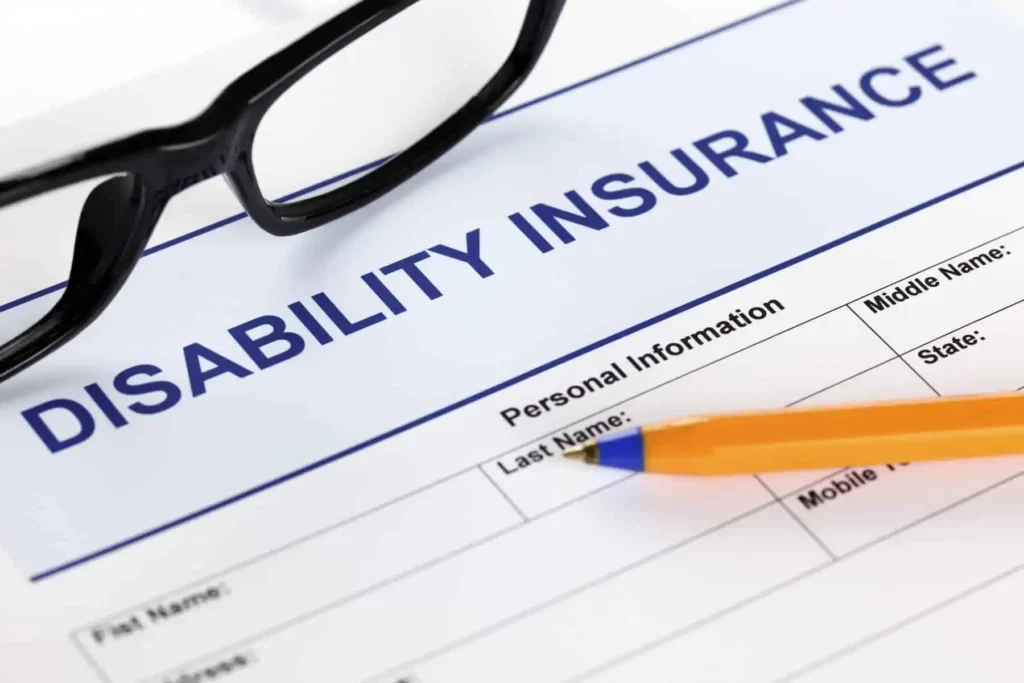What is Disability Insurance: Disability income insurance or income protection insurance, is a type of insurance coverage that provides financial protection to individuals in the event that they become disabled and are unable to work.
It is designed to replace a portion of the insured person’s income and help maintain their financial stability during a period of disability.

What is disability insurance?
Disability insurance is designed to replace a portion of your income if you become disabled and are unable to earn an income. A disability can result from a number of causes, including an injury, a serious illness or a mental health issue. And the duration of a disability can be either short- or long-term.
There are different kinds of disability insurance coverage, including individual insurance plans and group insurance plans, as well as government plans such as workers’ compensation and benefits provided under the Canada Pension Plan.
For more information, the Canadian Life and Health Insurance Association has developed an excellent guide to disability insurance that’s available on clhia.ca.
Here are some key points about disability insurance:
- Income replacement: Disability insurance aims to replace a portion of the insured person’s lost income if they are unable to work due to a covered disability. The policy typically pays a percentage of the person’s pre-disability income, such as 50% or 60%.
- Types of disability: Disability insurance policies can cover both short-term and long-term disabilities. Short-term disability insurance provides coverage for a limited period, usually a few months up to a year, while long-term disability insurance provides coverage for an extended period, often until retirement age.
- Definition of disability: Disability insurance policies typically define disability in different ways. Some policies define disability as the inability to perform the duties of your own occupation, while others may define it as the inability to perform any occupation for which you are reasonably qualified based on your education, training, and experience.
- Waiting period and benefit period: Disability insurance policies often have a waiting period or elimination period, which is the period of time you must be disabled before you can start receiving benefits. The benefit period is the length of time during which you are eligible to receive benefits, which can range from a few years to until you reach a certain age.
- Premiums and coverage: The cost of disability insurance premiums can vary depending on factors such as the insured person’s age, health, occupation, and the level of coverage desired. Policies with higher benefit amounts, longer benefit periods, and shorter waiting periods generally have higher premiums.
- Employer-sponsored vs. individual policies: Some employers offer disability insurance as part of their employee benefits package. These policies are often group disability insurance and provide coverage to employees. Alternatively, individuals can purchase individual disability insurance policies directly from insurance providers to ensure personal coverage outside of their employment.
How To Get Disability Insurance
· Step 1
Find an advisor
Because of the different kinds and sources of disability insurance, it’s important to talk to an insurance professional who can advise you on the coverage options that best meet your circumstances. Talk to your advisor or find an advisor to help answer your questions. There is no cost to talk to an advisor.
· Step 2
Meet with your advisor
To get the most out of the meeting with your advisor, take some time beforehand to think carefully about what you want to achieve. And because your advisor will need additional information to help recommend the policy that’s right for you, get together some basic information about your income, assets and liabilities.
· Step 3
Apply for coverage
Your advisor will handle the paperwork for you. You’ll need to submit an application for a policy that will be evaluated by the insurance company. You may also be asked to undergo a physical exam or provide other medical or financial information.